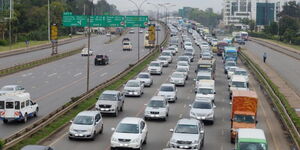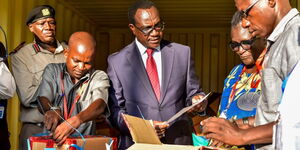Kenya Ferry Service (KFS) has announced that all pedestrians seeking to cross the channel will have to use the Likoni floating bridge at Liwatoni.
KFS announced the changes during a public address on Tuesday, March 30, at the Likoni Ferry Channel.
Pedestrians have continued to avoid the Liwatoni footbridge since its commissioning and insist on congesting the ferries at Likoni Channel despite the Covid-19 protocols.
"This bridge was not mandatory for people to use, it was built to reduce crowding. It has now become a must for us to use this bridge. This is so unfair because the distance is too long, almost 3km," complained a pedestrian.
More than 300,000 commuters and 6,000 vehicles use the ferries daily, which facilitated the building of the floating bridge to offload some of the congestion from the ferries, particularly during peak hours.
The high volume of commuters at the channel makes it one of the riskiest areas at the Coast forcing security officers to be deployed to control the crowds.
Pedestrians will be expected to avoid the ferries and make use of the bridge which operates between 6 am and 8 am and from 4.30 pm to 7 pm.
“From tomorrow, you must use the floating bridge and only vehicles will be allowed to use the ferries while crossing,” announced a KFS official.
According to KFS Public Relations officer Francis Mugomati, the directive was meant to enforce Covid-19 protocols as instructed by the County Covid-19 Emergency Response Committee.
Likoni Floating Bridge project is estimated to have cost the government at least Ksh1.5 billion.
Spanning a total of 1,058.9 metres in length, the one-of-a-kind bridge includes a 241.5-metre floating section in the middle of the crossing.
"The bridge has been designed to withstand the typical weather and water conditions of the channel," stated The Kenya National Highways Authority (KeNHA).












